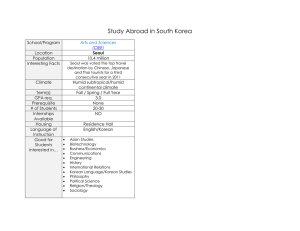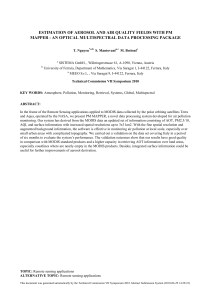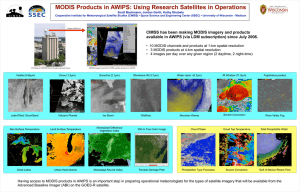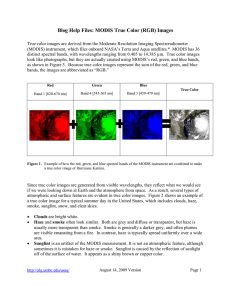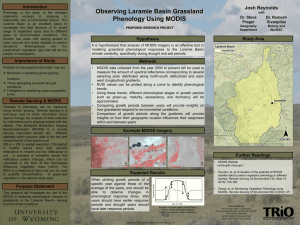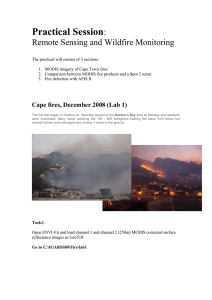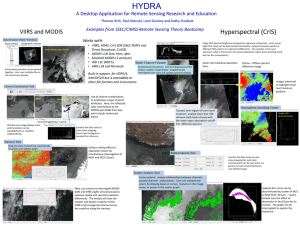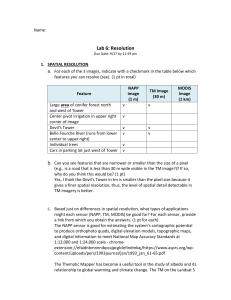Estimating stability indices from MODIS infrared measurements over the Korean Peninsula
advertisement
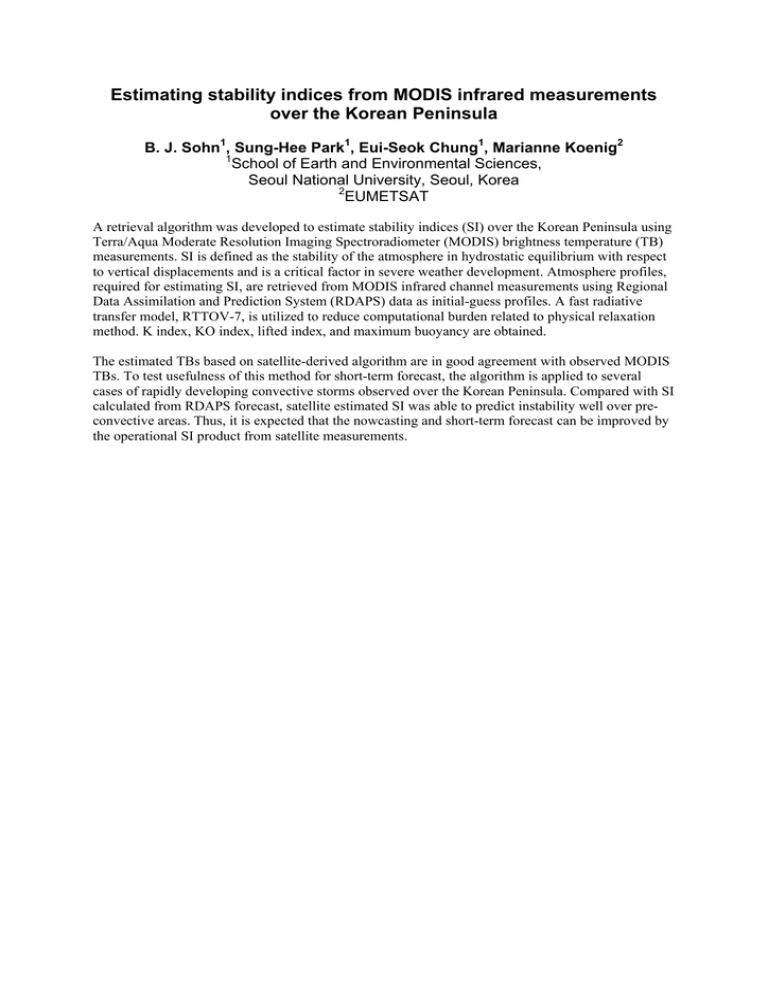
Estimating stability indices from MODIS infrared measurements over the Korean Peninsula B. J. Sohn1, Sung-Hee Park1, Eui-Seok Chung1, Marianne Koenig2 1 School of Earth and Environmental Sciences, Seoul National University, Seoul, Korea 2 EUMETSAT A retrieval algorithm was developed to estimate stability indices (SI) over the Korean Peninsula using Terra/Aqua Moderate Resolution Imaging Spectroradiometer (MODIS) brightness temperature (TB) measurements. SI is defined as the stability of the atmosphere in hydrostatic equilibrium with respect to vertical displacements and is a critical factor in severe weather development. Atmosphere profiles, required for estimating SI, are retrieved from MODIS infrared channel measurements using Regional Data Assimilation and Prediction System (RDAPS) data as initial-guess profiles. A fast radiative transfer model, RTTOV-7, is utilized to reduce computational burden related to physical relaxation method. K index, KO index, lifted index, and maximum buoyancy are obtained. The estimated TBs based on satellite-derived algorithm are in good agreement with observed MODIS TBs. To test usefulness of this method for short-term forecast, the algorithm is applied to several cases of rapidly developing convective storms observed over the Korean Peninsula. Compared with SI calculated from RDAPS forecast, satellite estimated SI was able to predict instability well over preconvective areas. Thus, it is expected that the nowcasting and short-term forecast can be improved by the operational SI product from satellite measurements.
